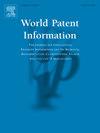Patentability of AI and global harmonization: An analysis of the current guidelines in Brazil and the IP5 offices
IF 1.9
Q2 INFORMATION SCIENCE & LIBRARY SCIENCE
引用次数: 0
Abstract
Innovations related to artificial intelligence can impact many technological fields and several sectors from industry, including patent offices and the patent system. Major patent offices have been updating their examination guidelines to address the particularities of AI inventions, providing legal certainty and predictability to the players in the patent system. The present study has explored the responses of the IP5 patent offices and Brazil's INPI to these challenges, revealing key areas of harmonization, divergence, and areas requiring further development. The analysis shows that, while the IP5 offices have taken steps to adapt their patent guidelines to account for the unique features of AI technologies, Brazil's INPI lags behind in terms of clarity and specificity. This works also analyses the level of harmonization among the IP5, where we conclude that significant differences remain between their approaches, especially in the case of the USPTO, which continues to rely heavily on judicial interpretations. Brazil's INPI must continue to evolve its guidelines, and there is an opportunity to observe the behavior of the IP5 to incorporate best examination practices in Brazil. By aligning with international best practices and offering clear, detailed guidance, patent offices can provide the legal certainty necessary to foster sustained investment in AI, ensuring that these transformative technologies benefit both inventors and society at large.
人工智能的可专利性和全球协调:对巴西和五局现行指南的分析
与人工智能相关的创新可以影响许多技术领域和工业的几个部门,包括专利局和专利制度。主要专利局一直在更新其审查指南,以解决人工智能发明的特殊性,为专利制度中的参与者提供法律确定性和可预测性。本研究探讨了五国专利局和巴西国家知识产权局对这些挑战的反应,揭示了协调、分歧和需要进一步发展的关键领域。分析表明,虽然五国知识产权局已采取措施调整其专利指南,以考虑人工智能技术的独特性,但巴西的INPI在清晰度和特异性方面落后。本著作还分析了五国知识产权局之间的协调程度,我们得出结论,它们的方法之间仍然存在显著差异,特别是在美国专利商标局的情况下,它继续严重依赖司法解释。巴西的INPI必须继续发展其指导方针,并且有机会观察IP5的行为,以纳入巴西的最佳审查实践。通过与国际最佳实践保持一致并提供清晰、详细的指导,专利局可以提供必要的法律确定性,以促进对人工智能的持续投资,确保这些变革性技术使发明者和整个社会受益。
本文章由计算机程序翻译,如有差异,请以英文原文为准。
求助全文
约1分钟内获得全文
求助全文
来源期刊

World Patent Information
INFORMATION SCIENCE & LIBRARY SCIENCE-
CiteScore
3.50
自引率
18.50%
发文量
40
期刊介绍:
The aim of World Patent Information is to provide a worldwide forum for the exchange of information between people working professionally in the field of Industrial Property information and documentation and to promote the widest possible use of the associated literature. Regular features include: papers concerned with all aspects of Industrial Property information and documentation; new regulations pertinent to Industrial Property information and documentation; short reports on relevant meetings and conferences; bibliographies, together with book and literature reviews.
 求助内容:
求助内容: 应助结果提醒方式:
应助结果提醒方式:


